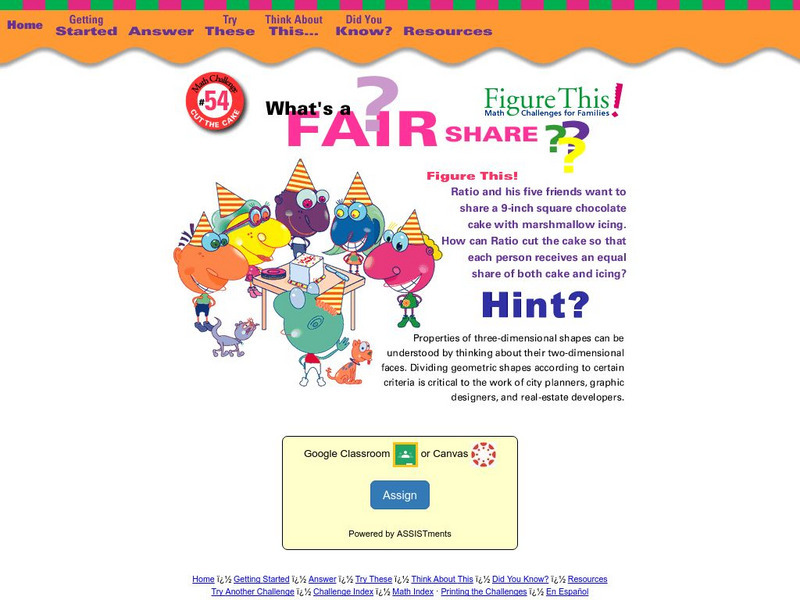Hi, what do you want to do?
Curated OER
Great Shapes Alive!
Compare two- and three-dimensional shapes and construct three dimensional models from two-dimensional shapes. Diagram the shapes and reflect about the process in writing.
Curated OER
Pyramids with Basic Bases
Students explore pyramids. In this math lesson, students discuss where they have seen examples of pyramids. Students classify pyramids as three-dimensional figures and identify their attributes.
Curated OER
Measurement
Seventh graders measure surface area. In this geometry lesson, 7th graders find the surface area of various geometrical shapes. Using a computer program, students compute the area of 2-D and 3-D shapes. Students use...
Curated OER
Practice Problems
Students will determine the relationship between two line segments in a given three-dimensional figure. Figures are either rectangular or triangular prisms.
Curated OER
3-D Figures Part 2
Students work with three dimensional objects. In this geometry lesson, students examine models of spheres, cones, cubes, prisms, and pyramids, and identify them by their edges, vertices, and faces.
Curated OER
Net B- Cone- Learning Tool 33
In this geometry worksheet, students cut out a net of a cone by following along the dotted lines as indicated by the scissors icon. They fold the figure to form a three-dimensional cone which they tape together. There are no directions...
Curated OER
Trace a Face
Students find two dimensional shapes in three dimensional figures. They determine the shapes that make up the faces of three dimensional figures of common classroom objects such as crayon boxes.
McGraw Hill
Glencoe: Self Check Quizzes 1 Three Dimensional Figures
Use Glencoe's randomly generated self-checking quiz to test your knowledge of three-dimensional figures. Each question has a "Hint" link to help. Choose the correct answer for each problem. At the bottom of the page click the "Check It"...
abcteach
Abcteach: Geometry
[Free Registration/Login Required] This resource has an assortment of teacher-created geometry activities for elementary and primary students. Printable two-dimensional shapes, area and perimeter worksheets, board games, rules and...
National Council of Teachers of Mathematics
The Math Forum: Building a Pyramid
This Math Forum lesson gives instructions on how to build a paper pyramid. Bonuses included finding the surface area and volume of the pyramid.
McGraw Hill
Glencoe Mathematics: Online Study Tools: Three Dimensional Figures
This site gives a short interactive quiz which allows students to self-assess their understanding of the concept of three-dimensional figures.
University of Cambridge
University of Cambridge: Nrich: Octa Space
At this one page web site see if you can solve this puzzle involving the edges of an octahedron. You will definitely need to use your problem solving and spatial reasoning skills for this!
National Council of Teachers of Mathematics
Nctm: Figure This: Cut the Cake
A math challenge where geometry, measurement, and problem solving meet. Explore the properties of three dimensional shapes when you discover how six friends can equally divide a nine inch square chocolate cake. A one page activity from...
National Council of Teachers of Mathematics
Nctm: Figure This: Keeping Cool
Is it better to by block ice or crushed ice? Use your logical reasoning and measurement skills to solve this challenge that compares surface area of block ice and the same block cut into three cubes. A one page activity from the NCTM...


















